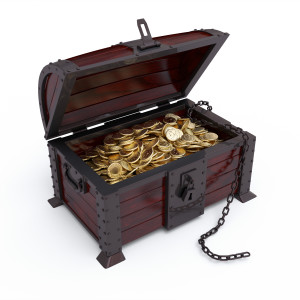Reach Into the Tidbit Treasure Chest
 For freelance blog content writers, the tidbit “bin” turns into a treasure chest. If you’re working on a business blog and you can include interesting information most readers don’t know, that’s gold. Even if such information appears useless on the surface, if we get creative, we can put it to very good use in adding interest to our blog. One of my favorite sources for tidbit “ore” is Mental Floss magazine.
For freelance blog content writers, the tidbit “bin” turns into a treasure chest. If you’re working on a business blog and you can include interesting information most readers don’t know, that’s gold. Even if such information appears useless on the surface, if we get creative, we can put it to very good use in adding interest to our blog. One of my favorite sources for tidbit “ore” is Mental Floss magazine.
Take these three tales recounted in Mental Floss:
1. Frank Humely, imprisoned in the Los Angeles County jail for forgery and miscellaneous other misdeeds, hatched a plan to escape. An accomplice would mail him sugar-fronted cakes with a gun and ammo hidden inside. Frank planned to shoot the guards, take the keys, and hightail it. The plan failed – the cakes attracted attention because they were so heavy…
(I can see a bakery using this story to illustrate the lightness of their own wonderful cake creations.)
2. In the 10th century, the Vikings in Denmark had a special way of singing. They made a rumbling sound from their throats, described as “similar to a dog but even more bestial”.
(I can see this story being used in a blog for a cough lozenge company, a physician’s practice that treats severe sinusitis, or a voice studio!)
3. During the Vietnam War peace talks, the North Vietnamese insisted on having a square table for the meeting room, so that all four parties would appear equal, while, for that very reason, the U.S. and South Vietnam wanted a rectangular table.
(A furniture store could do a lot with this story. I can also see this in a blog for meeting planners, or even one offered by a school architectural firm.)
Continually coming up with fresh content to inform, educate, and entertain readers is a pretty tall order for busy business owners and employees. Trivia can solve the problem. Tidbits of information can be used in business blogs for defining basic terminology, sparking curiosity about the subject, putting modern-day practices and beliefs into perspective, and for explaining why the business owner or practitioner chooses to operate in a certain way.
Reach into your own tidbit treasure chest!





Follow us online!